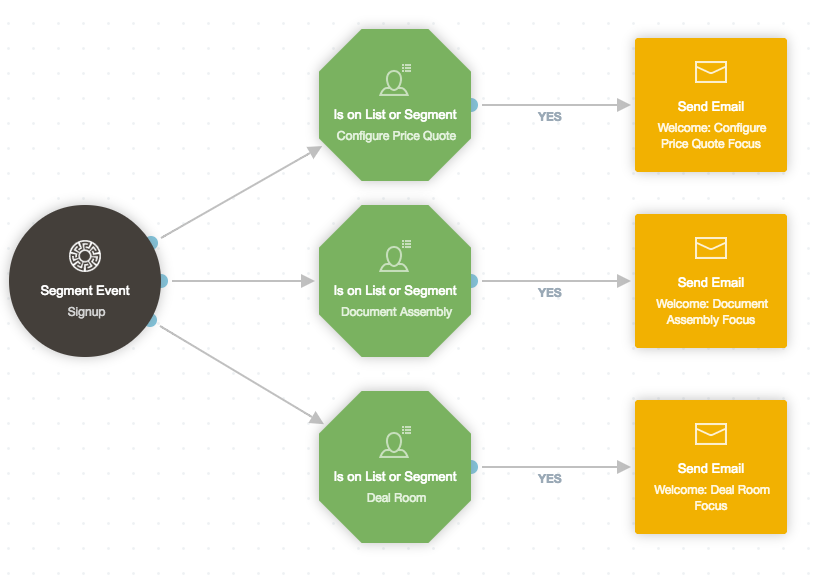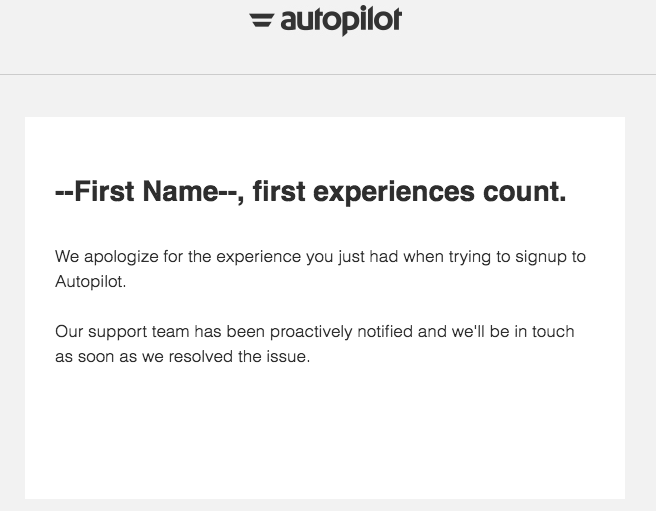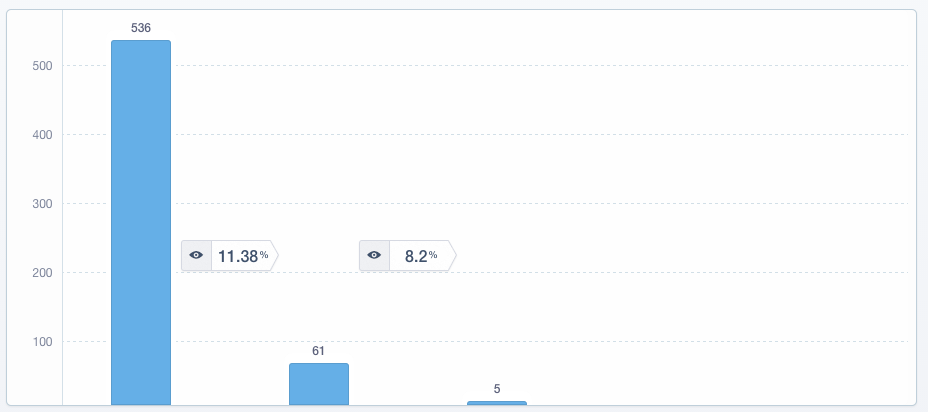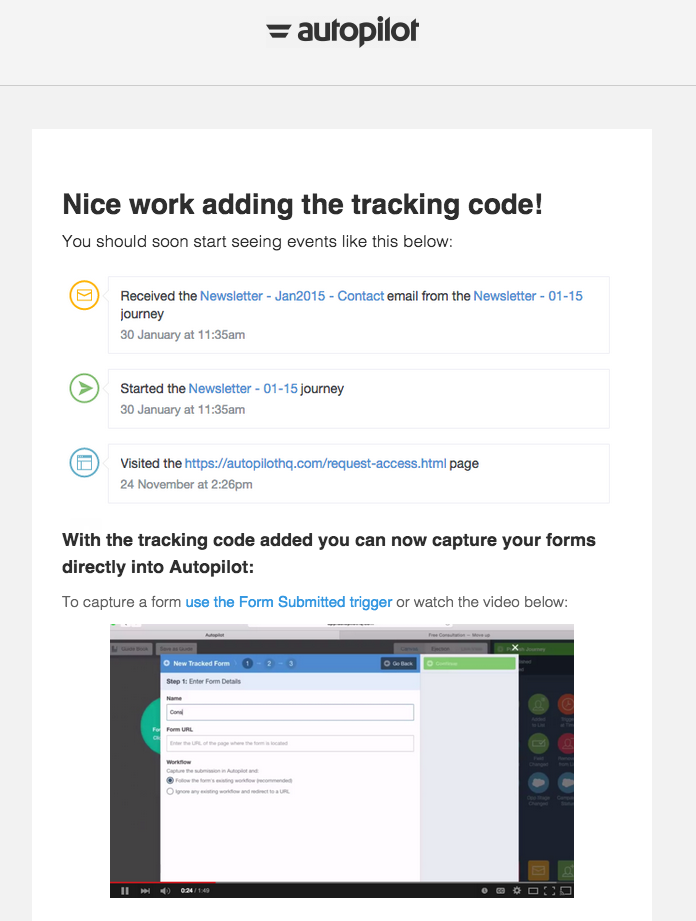Today, a surprising 61% of marketers in the US still rely on basic batch and blast emails to communicate with their audience. Only 4% have “graduated” to marketing automation, or creating email campaigns based on the personal experience each user has in your product.
Marketing automation is appealing because you can collect more granular lifecycle data on how customers move throughout your website, app, landing pages, support portals, etc., which in turn lets you to send more targeted messages.
In this post, I’ll explain how Autopilot and some of our customers use this approach to create relevant, high-converting email campaigns.
What is behavioral marketing?
Behavioral marketing, also called behavior-based marketing, is a marketing strategy that utilizes data on how customers interact with an app, website, or service to create a personalized marketing experience. Behavioral marketing strategies incorporate data such as browsing history, on-page actions & events, demographics, cookies, and IP data to create segmented user profiles that can be targeted with greater specificity and effectiveness than traditional one-size-fits-all campaigns.
What is behavioral marketing automation?
Behavioral marketing automation refers to tools and processes that businesses use to automatically target users based on behavioral data. This typically means identifying behavior patterns in your target audience and triggering messages based on customers completing (or not completing) specific events within your app, website, or service.
Different types of behavioral marketing
Behavioral marketing is an umbrella term that includes many different digital marketing strategies across numerous channels. Here are some of the most popular and effective.
“Customers also buy”
One of the most common types of behavioral marketing, typically used in ecommerce, is suggested selling. This involves tracking data on a customer’s purchasing behavior and the products they view, and suggesting new products that they’re more likely to be interested in.
Behavioral retargeting
Retargeting is a behavioral marketing strategy that involves targeting customers with advertisements that show pages or products that they’ve viewed in the past. Similar to suggested selling, this strategy uses data on past behavior to better understand what customers are interested in and provide ads that are more likely to convert.
Email engagement
In email marketing, marketers often use audience segmentation based on previous engagement to send customized messages that will provide the most relevancy (and ultimately improve click-through rates).
Demographic targeting
Demographic targeting is a type of marketing segmentation that uses customer data such as age and gender to show advertisements more relevant to that demographic. This type of targeting is often used on social media (where demographic information on users is most readily available).
3 awesome examples of behavior-based marketing automation
Now that we’ve walked through what we mean by behavioral marketing, let’s overview some successful examples we’ve seen of businesses harnessing automation to create more effective marketing campaigns.
1. Activate new users by sharing relevant features and resources
It’s common for marketers to set up a drip of activation emails based on a single customer action. For example, a user signs up for a free trial, and we send a series of educational emails. Or, a user completes a key milestone in the product, and we send a congratulations email.

A typical activation email string based on a single event.
These drip emails can effectively guide first time users, but with a holistic view of the customer journey we can make the emails more helpful. For example, let’s look at how PandaDoc incorporates user behavior to send more personalized emails.
PandaDoc is a startup that offers smart document automation for sales. They offer four distinct features:
-
Document Assembly;
-
Configure, Price, Quote (CPQ);
-
Deal Room; and
-
Workflow Automation.
Before signing up for PandaDoc, users typically browse features, read their blog and compare pricing. These actions give us clues into what features they’ll be most interested in.
To collect this data, Pandadoc creates a Segment track event each time a user signs up, which sends the unified identity of the new user along with previous historical information to Autopilot. This data enables us to create a more tailored welcome email.

Instead of using a single welcome email path, PandaDoc sorts users into tracks with different content based on their behavior history. For example, people who browse blogs and pages about the price quote feature are added to the “Configure Price Quote” Segment. After signing up, they receive a personalized onboarding message about the feature they browsed, resulting in more engagement and conversions.
2. Proactively offer customer support to users who have issues
While it’s easy to use Segment for tracking positive events like signups or goal completions, you can also use Segment to identify negative events, such as a bug in your software or a common behavioral roadblock, so that you can automatically send tips or engagement offers.
For example, at Autopilot we use Segment events to increase retention by identifying negative behaviors and taking immediate action to overcome them. Behaviors we listen for include:
-
Failure to complete mail domain setup;
-
Failed connection to Salesforce CRM due to wrong user permissions;
-
Incomplete trial sign up due to technical or other issues; or
-
User encounters a known product issue or bug.
Below is an example of what happens if you encounter an error when signing up for a free trial:

The Segment Sign Up Error track event allows us to immediately recognize the problem and then send a notification email to our support software (Zendesk), which creates a ticket on behalf of our customer. The customer is also notified immediately (via Autopilot), reassured that help is on the way.

In the example above we were able to retain 88% of all signups that resulted in an error.
3. Help users learn your product with positive reinforcement
Analytics applications like Mixpanel or KISSmetrics allow you to create product activation funnels for Segment track events. These activation funnels visualize the popular features and the obstacles that users encounter as they explore your product.

Using this event data, you can identify stages or moments when you need to send automated communications to help your users advance to the next behavior in the activation funnel.
In our own product, when people add the Autopilot tracking code (which allows them to track online activities and capture contacts from form submissions), we know that their next likely behavior is to track a form on their site. In order to increase the conversion rate from adding the tracking code to tracking their first form, we built a user behavior journey.

The journey listens for the Segment track event to notify us when the user has added the tracking script (trackingCodeAdded).
If true, we update the user’s contact field to note that they have added the tracking script, send an internal notification to our team, and then send a personalized engagement email to the user by first checking to see what other relevant events they have completed.
Have they: a) tracked a form, or b) imported their contact from a spreadsheet? Depending on those, we automatically send an email with tips and links that are specific to their actual usage and stage of the activation funnel.

Using Segment to track the moments when customers engage in your product, then automatically sending resources to help them succeed or reward them for positive behaviors, is a win-win. Users feel more satisfied, and your conversion go up big time.
Takeaways
Being able to personalize your marketing based on how customers use your product or engage with your content is nothing new. Neither is automating your marketing or sending multi-channel messages. But doing so quickly and intuitively, and integrating your various data, product, and engagement systems is often hard to do, slow-going, and costly. That’s why we love using Segment to connect all of our systems like Autopilot, Zendesk, and Mixpanel together seamlessly.
If you’d like to learn how to automate personalized communication based on user behavior, catch the recording of our webinar featuring myself, Diana Smith, Director of Marketing at Segment, plus special guests Serge Barysiu, CTO at PandaDoc, and Lauren Alexander, VP of Marketing at PandaDoc.

The State of Personalization 2023
Our annual look at how attitudes, preferences, and experiences with personalization have evolved over the past year.
Frequently asked questions
Behavioral characteristics in marketing can include viewing a specific page or set of pages that reflects an interest in a certain type of products, opening or not opening certain emails, or completing an event in an app (such as using an app for the first time after downloading it).
Businesses often use the completion (or non-completion) of specific events in their app, website, or service to trigger customized messages. For example, if a customer scrolls to a certain depth in a page, an opt-in message might be triggered asking the visitor to sign up to an email list.
Customer data provides immensely valuable insight into the interests, preferences, and characteristics of customers. Behavioral segmentation is simply the strategy of using this data on consumer behavior and preference to create more relevant and persuasive ad campaigns for specific segments of customers. This data is one of a company’s most valuable assets, and behavioral segmentation helps you unlock it’s value and augment marketing efforts.
Behavioral marketing automation allows you to divide customers into segments and target them efficiently with minimal manual input. This means not just creating more effective marketing campaigns, but saving your marketing team’s time and improving the ROI of your campaigns.